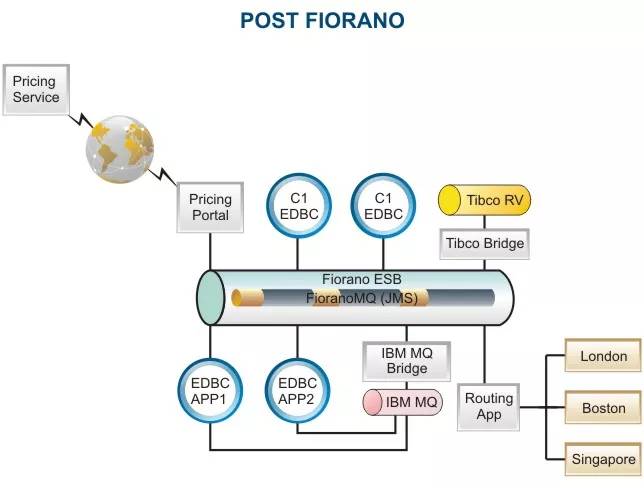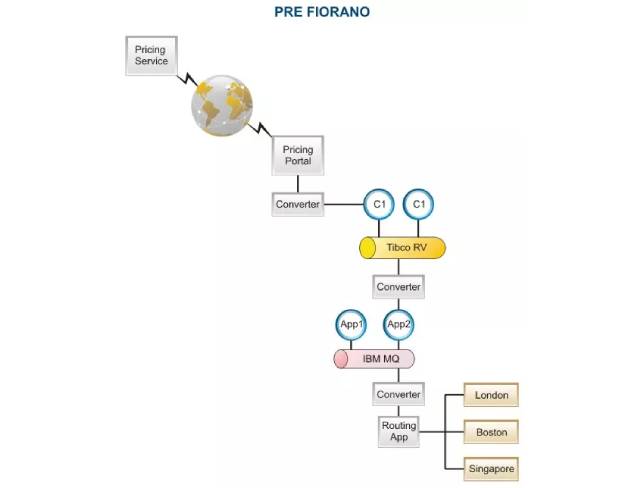Business Challenge
The IT infrastructure had grown with the bank over time. It was built and developed on multiple technologies including multiple vendor products and applications designed using varying methodologies. Over time, the bank's IT managers realized that if they were to get optimal returns from their technology investments they needed a flexible and agile IT infrastructure to respond quickly and effectively to the ever growing business demands. As a result, they established strict architectural disciplines vowing to overcome the followings:
Transport-vendor Dependency -
The bank infrastructure has, over time, implemented multiple transport systems, including MQ Series, Tibco and others. Seamless switching among transport vendors should be available.
Hosting Environment -
There should be a reliable, high performance and 'high available' component hosting environment.
Componentization-
Business logic locked within various applications should be extracted and aligned with other applications for reusability.
Well Defined Development Model -
Software applications supporting the business processes were developed in an ad-hoc manner with a diverse and undefined architecture.
Black-Box Integration -
Most of the time when contract programmers left the organization, the applications tend to become black boxes, making it difficult to incorporate business logic changes.
Event Driven Architecture -
Provide a uniform event driven, component architecture for applications across global operations for transport independence and maximum reusability.
Reusability -
No rip-n-replace approach to the existing infrastructure, choosing instead a gradual approach that allows maximum reuse of existing resources.

10,000
Offices across 82 countries
Different Financial Centers in different locations are now managed and routed appropriately










